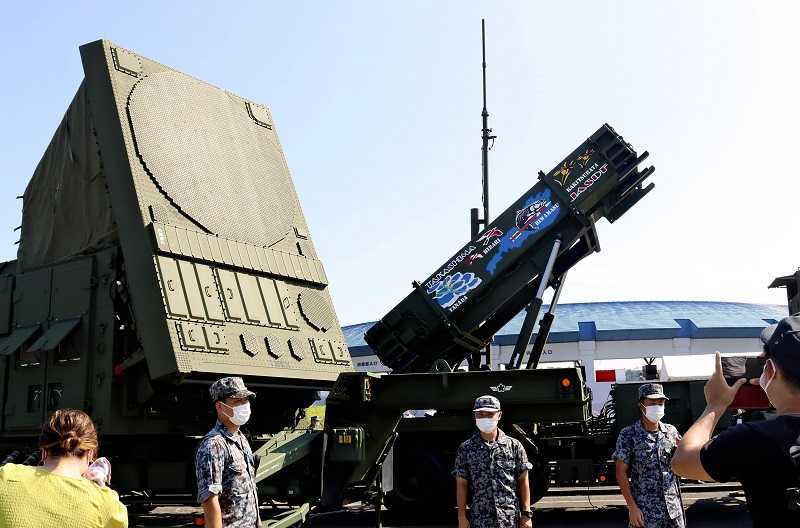Defense Ministry’s budget plans eye counterstrike capabilities

An Air Self-Defense Force missile launcher and radar equipment to intercept ballistic missiles are seen in Takashima, Shiga Prefecture, on Aug. 7.
16:11 JST, September 1, 2022
The Defense Ministry’s budget request for fiscal 2023 reflects the rapid deterioration of the security environment surrounding Japan. The government appears to be aiming to drastically strengthen the nation’s defense capability, with an eye to possessing the ability to counterstrike and destroy enemy missile-launch bases and other targets in self-defense.
The ministry has requested ¥5.5947 trillion for next fiscal year, a record high and up 3.6% from its initial budget for fiscal 2022.
“We want to secure the budget in order to fundamentally strengthen defense capabilities within five years, by carefully adding the necessary budget items,” Defense Minister Yasukazu Hamada said at a meeting at the Defense Ministry on Wednesday.
China and North Korea have moved forward with the development of hypersonic weapons, which fly on irregular trajectories, making it more difficult for the Self-Defense Forces to counter them with existing interceptor missiles. Late this year, the Japanese government plans to review the National Security Strategy, the National Defense Program Guidelines and the Medium Term Defense Program, and is expected to propose the possession of counterstrike capabilities in the review.
In its budgetary request, the ministry listed about 100 items for which the amount to be spent was not specified, an unprecedentedly high number. This is because many items cannot be calculated until the three security documents are revised.
The budgetary request notably includes items related to the possession of counterstrike capabilities. Long-range standoff missiles, which are designed to be launched from outside the range of an enemy, are expected to be the core of Japan’s counterstrike capabilities.
Among these items, funding has been included in the budgetary request to upgrade the Ground Self-Defense Force’s Type 12 surface-to-ship missile, to extend its range to 1,000 kilometers. If the upgraded version is deployed in the Nansei Islands and elsewhere, it could reach Chinese coastal areas and North Korea.
As Russia’s invasion of Ukraine has highlighted the importance of the ability to continue fighting, the ministry has also sought to increase its stock of ammunition. However, the expansion of ammunition production lines has been listed without specifying the cost.
About ¥11 trillion will be needed to achieve a defense budget of about 2% of the nation’s gross domestic product — the target that the ruling Liberal Democratic Party is calling for. Defense spending must be increased by about ¥1 trillion each year from the ¥5.4005 trillion allocated for the current fiscal year. The government and ruling parties expect the defense budget for next fiscal year to ultimately be in the mid-¥6 trillion range.
A major challenge will be to secure financial resources. With social security spending continuing to increase, the nation’s long-term debt has exceeded ¥1,000 trillion. The government intends to raise funding possibly by issuing new government bonds and raising taxes, while eliminating wasteful spending. Its deliberations regarding funding are likely to get fully underway toward the end of the year.




